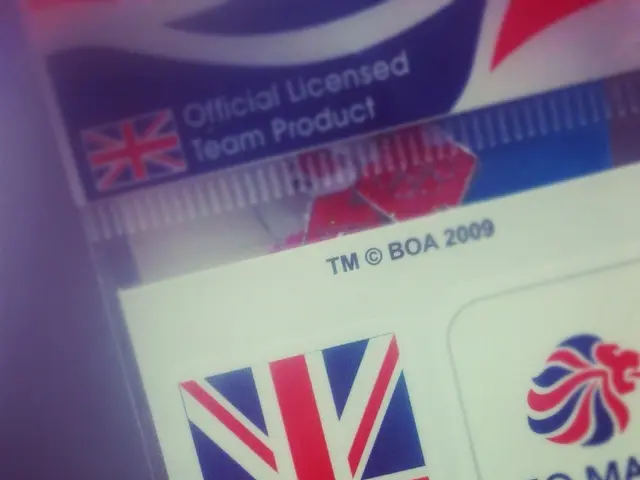Dive into the Average True Range (ATR)
Calculation Method, Interpretation, and Application of Average True Range (ATR) Indicator in Trading
Welcome to our guide on Average True Range (ATR)! This handy technical analysis indicator, dreamt up by market whiz J. Welles Wilder Jr., shines a light on market volatility. It's all about comprehending the wild swings a financial asset takes within a specific period.
So, What Exactly is the ATR?
Imagine you're hanging onto a rollercoaster for dear life. The ATR is like measuring the average height of those thrilling ups and downs – or, to be more technical, it's the average range of an investment's price movements. But unlike a ride at an amusement park, market volatility isn't always a one-size-fits-all experience. Traders can tweak the ATR to receive more trading signals or fewer, depending on whether they prefer a steady cruise or a rollercoaster experience.
Ingredients for the ATR Recipe
To swirl up your ATR concoction, combine three ingredients: the gap between the day's high and low, the absolute value of the high minus the previous close, and the absolute value of the low minus the previous close. Then choose a chunk of time, like a 14-day span, and calc lawdy the average. Now, you've got your tantalizing Average True Range!
ATR: More Than Just a Cute Acronym
Why, you ask? Traders everywhere are smitten with the ATR because it:
- Tells 'em how risky a certain investment is.
- Helps 'em decide when to jump in and out of trades.
- Acts like a yanking stop-loss, pulling them back from the edge if things go south.
- Islands a clue about what size trade to take, particularly in derivatives markets.
The Dance Between the ATR and Market Technicians
Market technicians love the ATR because it lets them measure a day's volatility without using a complex calculator. It's a helpful ally in their quest for trading victories, so it's no wonder they use it to craft their winning strategies.
Enchante, ATR: What's Next?
Now that you have a taste of what the ATR tea is all about, you may be eager to curl up with a good cup and learn more (of course, we didn't forget the enrichment data!). You'll see how the ATR can help you spot trading opportunities, fine-tune your exit strategy, and adjust your position sizes to the market's volatility. But remember, like any good recipe, the ATR isn't complete without incorporating other tasty indicators into your trading soufflé. Bon appétit!
``` markdown
Additional Information (Enrichment Data)
The Average True Range (ATR) is a popular indicator among market technicians to evaluate trading opportunities, set exit points, and adjust position sizes based on market volatility.
Using ATR in Trading
Entry Points
Traders employ the ATR to identify breakouts by entering a trade when the price exceeds a predetermined multiple of the ATR. For example, they might enter a trade when the price crosses 1, 1.5, or 2 times the ATR, indicating a significant price shift that could indicate the beginning of a new trend.
Exit Points
- Stop-Loss and Take Profit: Traders utilize ATR to create dynamic stop-loss and take-profit levels. They set these stops at multiples of the ATR from the entry price. As an illustration, if the ATR is $8.77, a stop-loss could be set at $17.54 (2x ATR) from the entry point.
- Trailing Stop-Loss: A trailing stop-loss can be adjusted based on the ATR, enabling it to follow the price advantages in favor of the trade, thus safeguarding profits while reducing losses.
Position Sizing
Traders adjust position sizes using ATR to reflect market volatility. A higher ATR suggests increased volatility, indicating smaller position sizes to manage risk, while a lower ATR suggests larger positions.
Limitations of ATR
- Subjective Multiplier Selection: The choice of a multiplier for the ATR (e.g., 1x, 2x, 3x) is subjective and can vary based on risk tolerance and market conditions. There's no one-size-fits-all multiplier, and traders must experiment to find what works best for their strategy.
- Lagging Indicator: ATR is a lagging indicator, which means it reacts to price movements that have already occurred. This could lead to delayed responses to changing market conditions.
- Does Not Predict Direction: ATR only measures volatility but does not predict the direction of price movements. Traders should combine it with other indicators to confirm trading decisions.
- Requires Adjustments for Different Markets: The appropriate ATR setting can vary significantly between different markets and time frames, necessitating traders to adapt their strategies accordingly.```
- In the realm of DeFi (Decentralized Finance), understanding the Average True Range (ATR) can offer valuable insights when dealing with volatile tokens, guiding both traders and investors.
- While the Technical Analysis of cryptocurrency tokens involves various indicators, the ATR remains a crucial tool, offering a measure of token volatility that influences trading decisions.
- The finance sector is not the only one interested in the ATR; general-news outlets highlight its significance in predicting the potential impact of volatile market conditions on various assets, including ico (Initial Coin Offerings).
- The intersection of technology, trading, and finance continues to expand, with the Average True Range (ATR) as a key technical indicator that bridges these domains, offering a common language for market technicians and traders alike.








